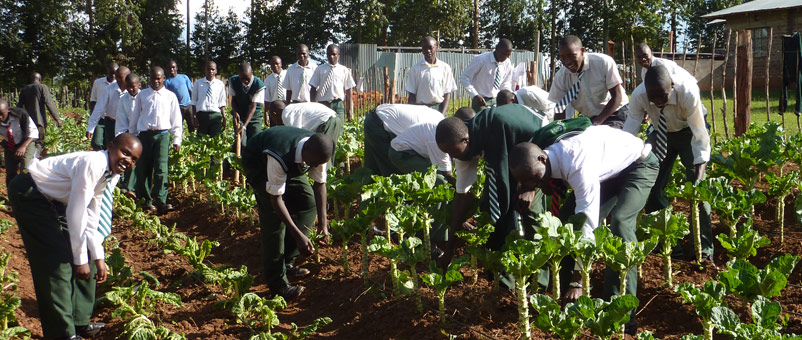As the Beatles said in the follow up to this famous line – we all want to change the world. Goal 2 of the proposed Sustainable Development Goals; which boldly resolves to end hunger & malnutrition, achieve food security, and promote sustainable agriculture in 15 short years is the world’s declaration to achieve this change. However, in order to know how to change the world we need first to measure it properly. And of all the sectors important to development, agriculture and nutrition are the most ripe for a data revolution.
Why? At present, data on what matters most for improving agriculture and nutrition are poor. For example, if we want to measure female land ownership in Africa, one of the most fundamental indicators for agriculture, there is virtually no recent, comparable, nationally representative data across African countries that contain information on women’s landownership and control or management.
The UN Statistical Commission recently released a technical report which laid out a provisional indicator framework for the SDGs. In the report, they gave ratings based on the feasibility, suitability and relevance of potential indicators for all 17 global goals. The best possible rating was AAA, and of the 12 potential indicators listed under Goal 2, not a single indicator received the top rating. Compare this to Goal 3 (Health), which had 13 out of 22 potential indicators with an AAA rating. Basically, this means that some of the brightest statisticians working on this couldn’t agree on indicators for ending hunger and promoting sustainable agriculture that were good enough.
Though this comparison may be apples to oranges (consider the degree of difficulty in measuring value of agricultural production per hectare vs. the number of TB deaths per year) it still underscores the point that we do not yet have high quality, internationally agreed indicators on agriculture and nutrition. We need more and better data, but how?
The Open Data Revolution
First of all, we need to measure what matters, and only that. Estimates on the resources it would take to collect the data for all the SDG’s using current methods are astronomical. That just isn’t feasible, but there are new approaches. Open data is one. In the agriculture community, GODAN, or the Global Open Data for Agriculture and Nutrition Initiative, is a network that supports global efforts to make relevant data available, accessible, and usable worldwide. Nigeria’s MDG information System is a tool that allows any citizen to explore data on how the country is progressing on those targets.
Open data allows all citizens who are able to use data to hold their leaders to account. The World Resources Institute recently used their Global Forest Watch tool to point to illegal land clearing for cocoa on a controversial plot of land in the Amazon. The potential of open data is huge. However, this doesn’t fully address the quality issue.
One example of high quality data collection that can be scaled up is the World Bank’s Living Standard Measurement Study – Integrated Surveys in Agriculture (LSMS-ISA). These surveys, currently in seven countries in sub-Saharan Africa, go a long way towards addressing the gaps in quality; especially in gender (all surveys take information for both male and female, a less common practice than you’d think). The Bank is now using this data to bust common myths about African agriculture – something which we will need a lot more of as the indicators of the SDGs are decided.
Boosting Investment
One of the key issues with bringing agriculture and nutrition data up to par with that of health is that it suffers from inconsistent investment. Especially in poorer countries, uneven or one-off external support from external donors is inadequate in a sector where changes in practice are realized over many seasons. There is also not enough focus on the links with poverty reduction, which if strengthened by data could attract more investment. This is a product of data being collected and analyzed in isolation from other Ministries (i.e. labor, health) that would reveal connected results.
The Overseas Development Institute recently reported that, in the medium term, a data revolution could pay for itself; whether through investor confidence, reduced borrowing costs for governments or in more efficiency and innovation by businesses using open data. Some of the revelations from the data we have on agriculture are amazing – for example, we can say with certainty that investment in the agriculture sector is 2-4 times more effective at poverty reduction than investment in any sector. But where should these investments be targeted, and how can we know which specific interventions best contribute to poverty reduction? That is where we need more information to generate targeted interventions. To successfully deliver the SDGs and end extreme poverty, we need governments, citizens and civil society to be able to track resources to results.
Few world leaders have fully committed to going to Addis Ababa in July to attend the UN Financing for Development Summit. We need governments to send heads of state so that big ambitions can be met by bigger results. ONE, along with governments and multilateral agencies will be hosting an event on harnessing the data revolution for sustainable development. If in July, they all say they want a data revolution; well we can change the way we understand agricultural development.



